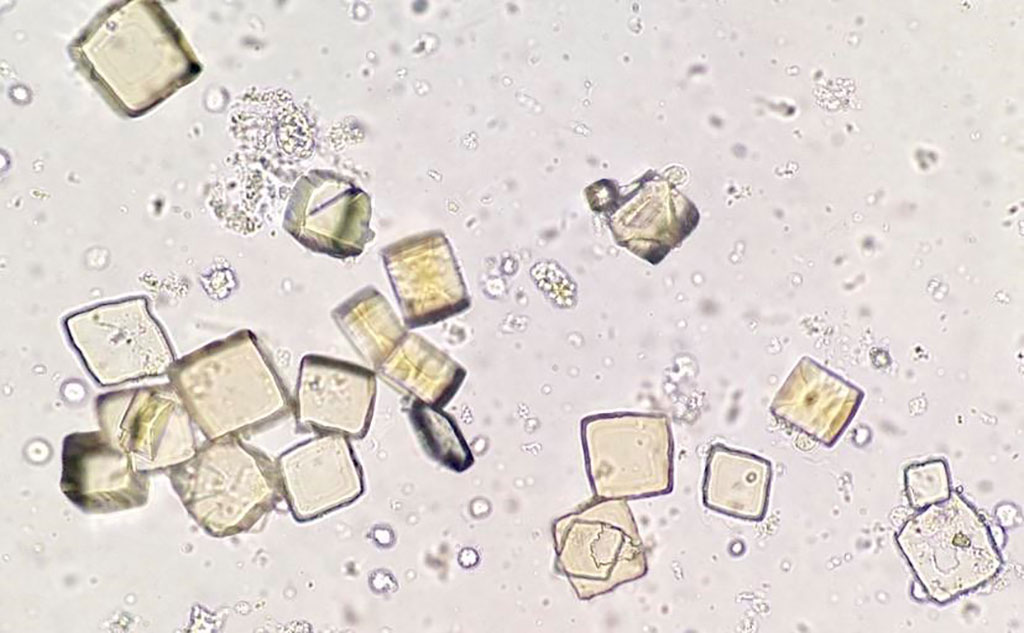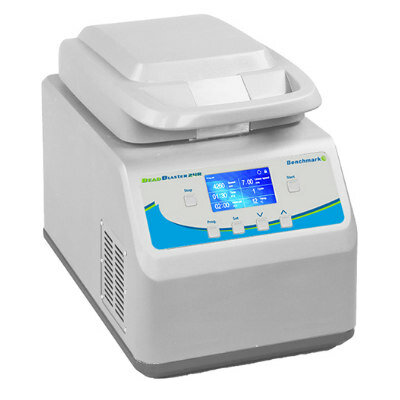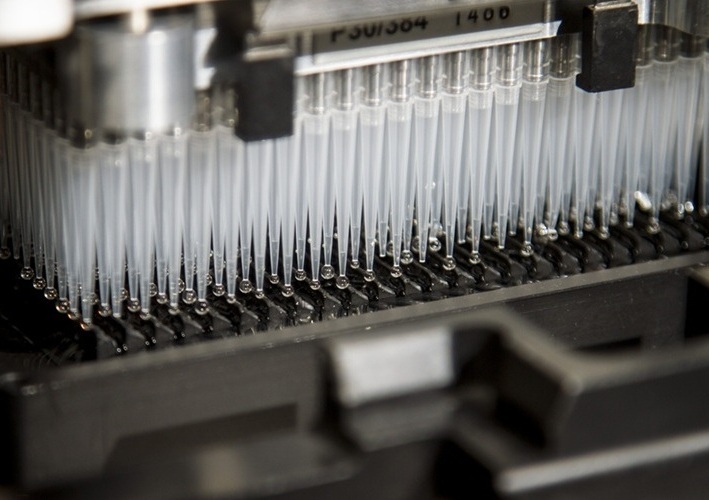Expo
view channel
view channel
view channel
view channel
view channel
view channel
view channel
view channel
view channel
Molecular DiagnosticsHematologyImmunologyMicrobiologyPathologyTechnologyIndustry
Events

- AI-Powered Raman Spectroscopy Method Enables Rapid Drug Detection in Blood
- Novel LC-MS/MS Assay Detects Low Creatinine in Sweat and Saliva
- Biosensing Technology Breakthrough Paves Way for New Methods of Early Disease Detection
- New Saliva Test Rapidly Identifies Paracetamol Overdose
- POC Saliva Testing Device Predicts Heart Failure in 15 Minutes
- CRISPR-Based Test Diagnoses Life-Threatening Fungal Infection More Quickly
- First Of Its Kind Measles Antibody Test Validated for Use with Dried Blood Spot Samples
- Simple Blood Test to Advance Targeted Treatments for Childhood Cancer
- Blood Test to Measure Organ Ageing Could Predict Disease Risk Decades in Advance
- New Test Detects Parasite Responsible for Trichomoniasis Infection In 15 Minutes
- WBC Count Could Predict Severity of COVID-19 Symptoms
- New Platelet Counting Technology to Help Labs Prevent Diagnosis Errors
- Streamlined Approach to Testing for Heparin-Induced Thrombocytopenia Improves Diagnostic Accuracy
- POC Hemostasis System Could Help Prevent Maternal Deaths
- New Test Assesses Oxygen Delivering Ability of Red Blood Cells by Measuring Their Shape
- Novel Analytical Method Tracks Progression of Autoimmune Diseases
- 3D Bioprinted Gastric Cancer Model Uses Patient-Derived Tissue Fragments to Predict Drug Response
- Blood Test for Fungal Infections Could End Invasive Tissue Biopsies
- Cutting-Edge Microscopy Technology Enables Tailored Rheumatology Therapies
- New Discovery in Blood Immune Cells Paves Way for Parkinson's Disease Diagnostic Test
- Unique Genetic Signature Predicts Drug Resistance in Bacteria
- Unique Barcoding System Tracks Pneumonia-Causing Bacteria as They Infect Blood Stream
- Rapid Sepsis Diagnostic Test Demonstrates Improved Patient Care and Cost Savings in Hospital Application
- Rapid Diagnostic System to Detect Neonatal Sepsis Within Hours
- Novel Test to Diagnose Bacterial Pneumonia Directly from Whole Blood
- Study Explores Impact of POC Testing on Future of Diagnostics
- Low-Cost, Fast Response Sensor Enables Early and Accurate Detection of Lung Cancer
- Nanotechnology For Cervical Cancer Diagnosis Could Replace Invasive Pap Smears
- Lab-On-Chip Platform to Expedite Cancer Diagnoses
- Biosensing Platform Simultaneously Detects Vitamin C and SARS-CoV-2
- ABL Signs Know-How License and Transfer Agreement for Siemens’ Fast Track Diagnostics PCR Portfolio
- Becton Dickinson to Spin Out Biosciences and Diagnostic Solutions Business
- New Partnership Revolutionizes Analyses of Biological Samples
- Medlab Middle East Looks to The Future of Laboratories
- Medix Biochemica Acquires German Immunoassay Solutions Developer Candor Bioscience
- Gene Panel Predicts Disease Progession for Patients with B-cell Lymphoma
- New Method Simplifies Preparation of Tumor Genomic DNA Libraries
- New Tool Developed for Diagnosis of Chronic HBV Infection
- Panel of Genetic Loci Accurately Predicts Risk of Developing Gout
- Disrupted TGFB Signaling Linked to Increased Cancer-Related Bacteria
- New AI Tool Outperforms Previous Methods for Identifying Colorectal Cancer from Tissue Sample Analysis
- New Technique Predicts Aggressive Tumors Before They Metastasize
- Butterfly Wings-Inspired Imaging Technique Enables Faster Cancer Diagnosis
- Machine Learning Tool Enables AI-Assisted Diagnosis of Immunological Diseases
- AI-Driven Tool to Accelerate Cancer Diagnosis

Expo
 view channel
view channel
view channel
view channel
view channel
view channel
view channel
view channel
view channel
Molecular DiagnosticsHematologyImmunologyMicrobiologyPathologyTechnologyIndustry
Events
Advertise with Us
view channel
view channel
view channel
view channel
view channel
view channel
view channel
view channel
view channel
Molecular DiagnosticsHematologyImmunologyMicrobiologyPathologyTechnologyIndustry
Events
Advertise with Us


- AI-Powered Raman Spectroscopy Method Enables Rapid Drug Detection in Blood
- Novel LC-MS/MS Assay Detects Low Creatinine in Sweat and Saliva
- Biosensing Technology Breakthrough Paves Way for New Methods of Early Disease Detection
- New Saliva Test Rapidly Identifies Paracetamol Overdose
- POC Saliva Testing Device Predicts Heart Failure in 15 Minutes
- CRISPR-Based Test Diagnoses Life-Threatening Fungal Infection More Quickly
- First Of Its Kind Measles Antibody Test Validated for Use with Dried Blood Spot Samples
- Simple Blood Test to Advance Targeted Treatments for Childhood Cancer
- Blood Test to Measure Organ Ageing Could Predict Disease Risk Decades in Advance
- New Test Detects Parasite Responsible for Trichomoniasis Infection In 15 Minutes
- WBC Count Could Predict Severity of COVID-19 Symptoms
- New Platelet Counting Technology to Help Labs Prevent Diagnosis Errors
- Streamlined Approach to Testing for Heparin-Induced Thrombocytopenia Improves Diagnostic Accuracy
- POC Hemostasis System Could Help Prevent Maternal Deaths
- New Test Assesses Oxygen Delivering Ability of Red Blood Cells by Measuring Their Shape
- Novel Analytical Method Tracks Progression of Autoimmune Diseases
- 3D Bioprinted Gastric Cancer Model Uses Patient-Derived Tissue Fragments to Predict Drug Response
- Blood Test for Fungal Infections Could End Invasive Tissue Biopsies
- Cutting-Edge Microscopy Technology Enables Tailored Rheumatology Therapies
- New Discovery in Blood Immune Cells Paves Way for Parkinson's Disease Diagnostic Test
- Unique Genetic Signature Predicts Drug Resistance in Bacteria
- Unique Barcoding System Tracks Pneumonia-Causing Bacteria as They Infect Blood Stream
- Rapid Sepsis Diagnostic Test Demonstrates Improved Patient Care and Cost Savings in Hospital Application
- Rapid Diagnostic System to Detect Neonatal Sepsis Within Hours
- Novel Test to Diagnose Bacterial Pneumonia Directly from Whole Blood
- Study Explores Impact of POC Testing on Future of Diagnostics
- Low-Cost, Fast Response Sensor Enables Early and Accurate Detection of Lung Cancer
- Nanotechnology For Cervical Cancer Diagnosis Could Replace Invasive Pap Smears
- Lab-On-Chip Platform to Expedite Cancer Diagnoses
- Biosensing Platform Simultaneously Detects Vitamin C and SARS-CoV-2
- ABL Signs Know-How License and Transfer Agreement for Siemens’ Fast Track Diagnostics PCR Portfolio
- Becton Dickinson to Spin Out Biosciences and Diagnostic Solutions Business
- New Partnership Revolutionizes Analyses of Biological Samples
- Medlab Middle East Looks to The Future of Laboratories
- Medix Biochemica Acquires German Immunoassay Solutions Developer Candor Bioscience
- Gene Panel Predicts Disease Progession for Patients with B-cell Lymphoma
- New Method Simplifies Preparation of Tumor Genomic DNA Libraries
- New Tool Developed for Diagnosis of Chronic HBV Infection
- Panel of Genetic Loci Accurately Predicts Risk of Developing Gout
- Disrupted TGFB Signaling Linked to Increased Cancer-Related Bacteria
- New AI Tool Outperforms Previous Methods for Identifying Colorectal Cancer from Tissue Sample Analysis
- New Technique Predicts Aggressive Tumors Before They Metastasize
- Butterfly Wings-Inspired Imaging Technique Enables Faster Cancer Diagnosis
- Machine Learning Tool Enables AI-Assisted Diagnosis of Immunological Diseases
- AI-Driven Tool to Accelerate Cancer Diagnosis



















































